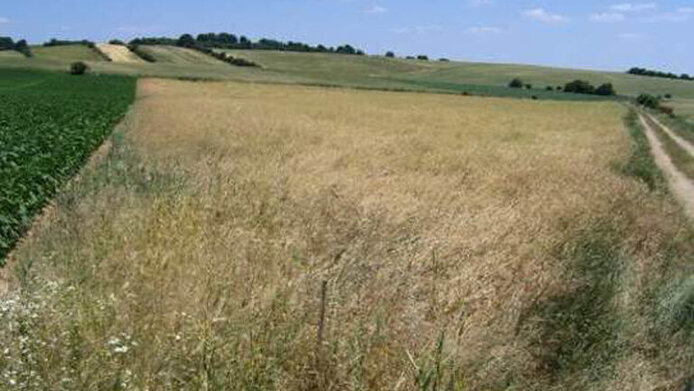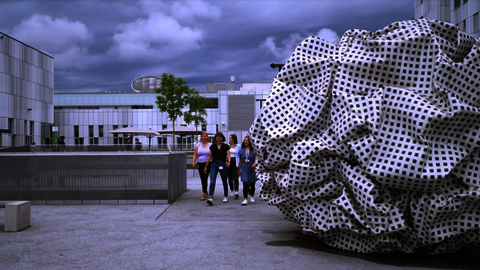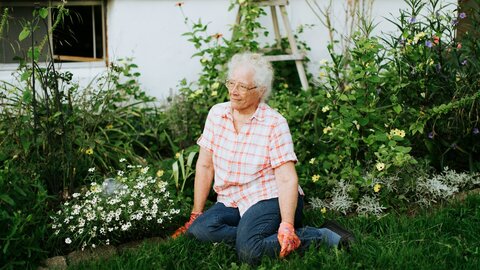Corridors to enhance biodiversity

Biological diversity in our habitats can ensure stability. But factors such as climate change, ground sealing and monoculture endanger biodiversity and, thus, the preservation of ecosystem functions. Today, some species die out 100 to 1000 times more quickly than would be the case under natural conditions. The potentially far-reaching consequences for nature and human beings include the sacrifice of clean water and fertile land. Agricultural land use has a strong impact on biodiversity, which is in turn influenced by policy decisions. In 2008, for instance, the European Union stopped subsidies for the preservation of agricultural set-asides in order to permit the production of energy from renewable resources on fallow land.
Scientists warn about negative impact
The biologist Thomas Frank from the Vienna University of Natural Resources and Life Sciences (BOKU) views current developments with great concern. “The countryside has changed greatly. It is becoming more and more monotonous, a large number of set-aside fields have more or less disappeared”, says Frank. “Investigations undertaken so far suggest that the increasing loss of fallow land will have a strongly negative impact on biodiversity and ecosystem services such as pollination and biological pest control.” In a recently initiated three-year project funded by the Austrian Science Fund FWF, Frank and his team intend to counteract this negative momentum and to establish empirical proof of the usefulness of biodiversity.
Enhancing the development of biodiversity
On the basis of existing grassland as source area, the research team of the FWF project creates “grass corridors” as cross-links between natural grassland and agrarian surfaces. Measuring 10 metres in width and 450 metres in length, these corridors are designed to increase the effectiveness of ecosystem services for the cultivated land and preserve biodiversity. “We want to find out whether the new grass strips which border the large source habitat attract more beneficial insects such as ground beetles, spiders or wild bees and hoverflies to the connected agrarian land”, explains project leader Thomas Frank. On these new grass strips, the scientists plant a vegetation mix similar to that on the source grassland in order to facilitate migration for the fauna. The international research team headed by Frank will observe which species already live on the grassland, how long it takes for them to spread to the agrarian land and what impact the grass strips have on beneficials already inhabiting the agrarian land. “Grassland is a good retreat for commonly found beneficial animals, but also for those that have become rare such as partridge and field hares. We want to study whether the density of beneficials increases within three years and whether their contribution is enhanced. As yet, this is relatively unknown territory”, explains Frank from Vienna's University of Natural Resources and Life Sciences. Among other things, aphids will be offered as prey to determine the level of biological pest control.
Delivering results for agricultural and environmental programmes
“The agrarian landscape reflects the way agrarian subsidies move at the moment”, is how Thomas Frank comments on the measures in environmental protection and agricultural development. Although the International Year of Biodiversity 2010 raised awareness of the issue through widespread media coverage, interest flagged markedly again in the following year, according to Frank’s summary of the situation. Despite the fact that the EU has laid down new, more tangible biodiversity objectives for 2020, aiming amongst other things at slowing down the pace of species extinction, the scientist remains sceptical. As a member of the Austrian National Biodiversity Commission, an advisory body coordinated by the Austrian Federal Ministry of Agriculture, Forestry, Environment and Water Management, Frank knows that it can be a long way from paper to practice. “It is easy to write down objectives, but implementing them in reality is quite another kettle of fish.” As he sees it, the success of the programmes ultimately depends on the way landscapes are reshaped. With insights gained from basic research, the scientists want to make an important contribution to the development of agrarian environmental measures and the promotion of diversity. The current popularity of home gardening and the awakening interest in rare plants is something Frank considers useful, and he recommends designing green areas in a near-natural way or to leave them to their own devices. “The more people do that, the greater the benefit for biodiversity.”
Personal details
Thomas Frank is a professor at the Vienna University of Natural Resources and Life Sciences, where he heads the Institute of Zoology at the Department of Integrative Biology and Biodiversity Research. His main research areas are agroecology, biodiversity, zoology and animal ecology. Frank is a member of numerous scientific bodies, including the Austrian National Biodiversity Commission.
Publications
Frank et al: “Habitat age affects beetle diversity in wildflower areas”, in: Agriculture, Ecosystems & Environment, Volume 152, Mai 2012
Frank et al: “Effects of habitat age and plant species on predatory mites (Acari, Mesostigmata) in grassy arable fallows in Eastern Austria”, in: Soil Biology & Biochemistry, Volume 50, Juli 2012






